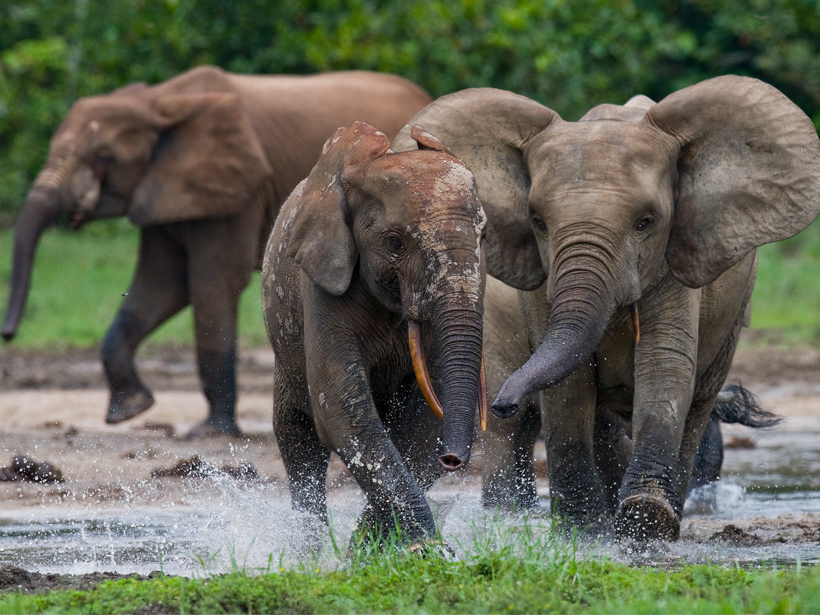Tropical rain forests drape over central Africa in the Congo Basin, covering an area 3 times the size of Texas. The forest is the second-largest tropical forest in the world, behind only the Amazon in South America.
African forests have taller trees and fewer tree species than other tropical forests, and researchers have long postulated that Africa’s forest elephants are responsible. Forest elephants are “ecosystem engineers” that change the type of plants that survive in the forest.
Findings indicate that 7% of carbon stores in central African rain forests will be lost if elephant populations continue to plummet.
But a study in Nature Geoscience on 15 July found that African elephants do more than garden the Congo: They help the forests store more carbon in their trees. The latest findings indicate that 7% of carbon stores in central African rain forests will be lost if elephant populations continue to plummet because of poaching for ivory and shrinking habitats.
Trees suck up carbon dioxide when they photosynthesize, and they repurpose the carbon into their trunks, branches, and roots. Certain trees have higher carbon densities, especially trees that are hardwood and slow growing. Elephants encourage the growth of slow-growing trees by clomping through the forest and eating, squishing, and knocking over fast-growing softwood trees, which they find more palatable.
Researchers in the latest study created a computer model to assess the influence of elephants on vegetation in an undisturbed forest. The model mimicked elephants’ impact by giving smaller trees in the model a lower survival rate. After 250 years of elephant intervention, the forest trees were taller and wider and held more carbon above ground than before. The results agreed with field data from forest study sites.
According to the model, elephants boost the forest’s carbon-carrying capacity by 3 billion tons of carbon. France emits a similar amount of carbon through fossil fuel emissions over the course of 27 years, lead author Fabio Berzaghi told Eos.
As countries release more carbon dioxide into the atmosphere, governments are looking for cost-effective ways to sequester carbon. Yet as poaching reduces elephant populations, which have fallen 90% over the past century, the study’s findings indicate that the amount of carbon stored in the African forest will drop as well. Berzaghi said there’s no way to know how much has already been lost.
Berzaghi noted that countries are missing out on a natural way to keep carbon stored in the ground. “Carbon technologies, at the moment, are really expensive,” Berzaghi said. “Nature offers a lot of these services for free.”
—Jenessa Duncombe (@jrdscience), News Writing and Production Fellow
Citation:
Duncombe, J. (2019), Elephants boost carbon storage in rain forests, Eos, 100, https://doi.org/10.1029/2019EO128873. Published on 16 July 2019.
Text © 2019. AGU. CC BY-NC-ND 3.0
Except where otherwise noted, images are subject to copyright. Any reuse without express permission from the copyright owner is prohibited.

